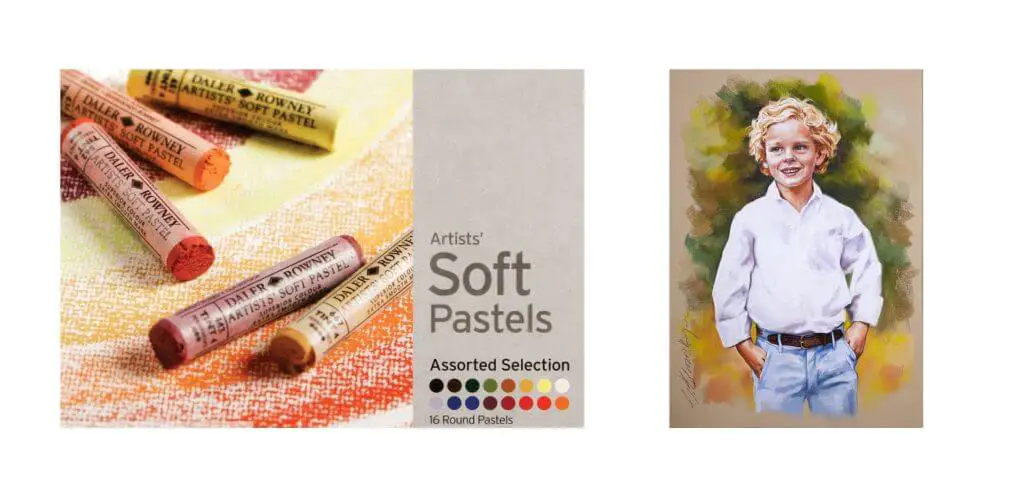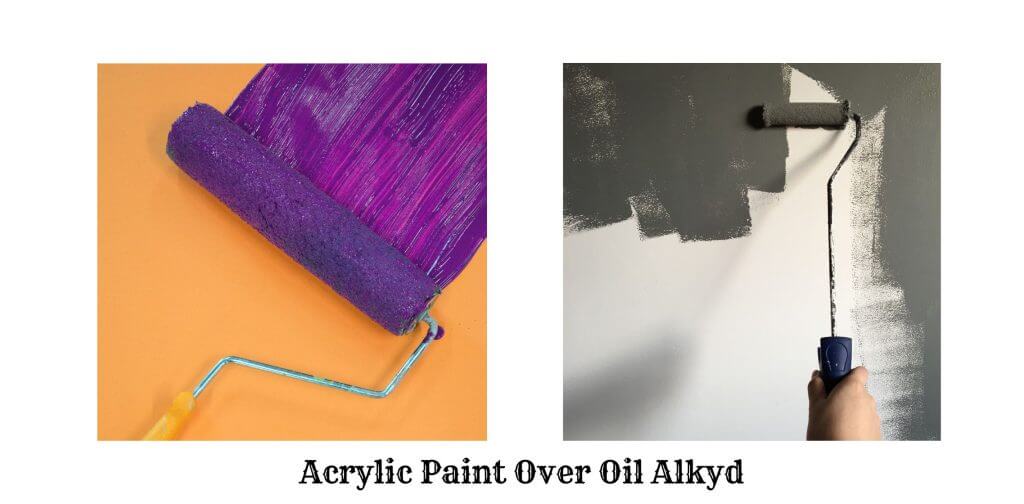Acrylic paint stands as a beacon of versatility in the art world. Yet, a question often resonating with DIY enthusiasts and artists is: Can you use acrylic paint on metal? This guide addresses this query while integrating pivotal topics like sustainability, troubleshooting, safety, and future trends in acrylic painting.
Table of Contents
Understanding the Compatibility: Acrylic Paint and Metal
Metal’s non-porous, smooth surface poses challenges for many paints. However, with meticulous preparation and the right products, acrylics can adorn metal surfaces beautifully.
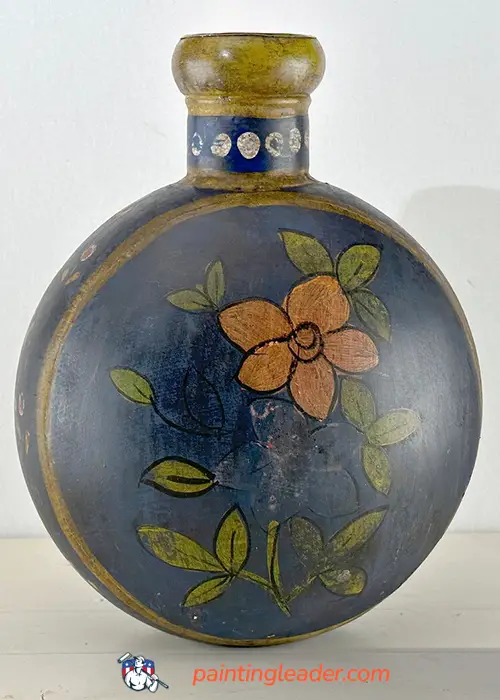
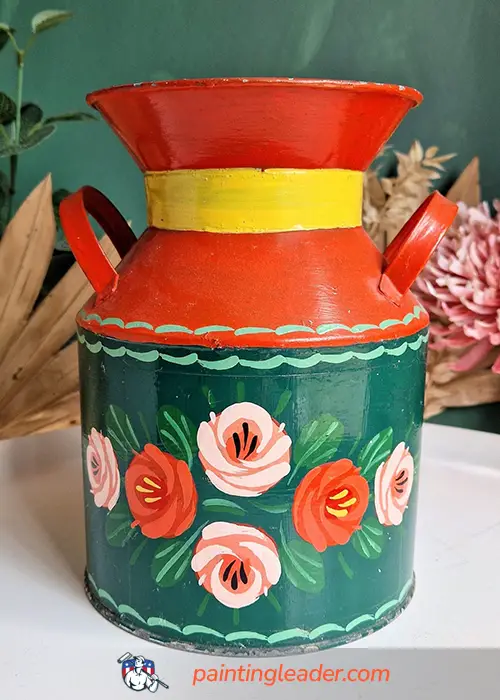
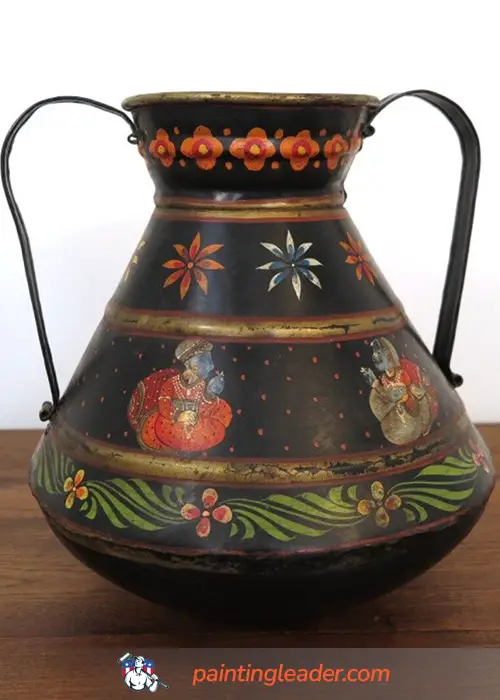
Step-by-Step Guide to Painting Metal with Acrylic
Preparation is Key:
Begin with a pristine metal surface. Employ fine-grit sandpaper to ensure the paint has a secure grip. Preparation is foundational to the success of painting acrylic on metal.
Priming the Surface:
After cleaning, apply an oil-based primer tailored for metal. This foundational layer amplifies color vibrancy and durability.
Choosing the Right Acrylic Paint:
Choosing the right acrylic paint is crucial for achieving the desired results, especially when working on challenging surfaces like metal. Each type of acrylic paint comes with its own set of advantages and limitations. To help you make an informed decision, let’s delve into the pros and cons of three popular acrylic paint brands: Golden Heavy Body Acrylics, Liquitex Basics Acrylic, and Winsor & Newton Galeria Acrylics.
- Golden Heavy Body Acrylics: Renowned for its vibrant, enduring results.
- Liquitex Basics Acrylic: A blend of affordability and reliability.
- Winsor & Newton Galeria Acrylics: Known for its exceptional adhesion and smooth flow on metal.
Golden Heavy Body Acrylics:
Pros:
- Vibrant Colors: Golden Heavy Body Acrylics are known for their rich and vibrant hues, allowing artists to create vivid and eye-catching artworks.
- Durability: These paints offer lasting results, ensuring that artworks maintain their brilliance over time.
- Texture: The heavy body consistency provides artists with more control over texture and impasto techniques, allowing for intricate detailing and layering.
Cons:
- Cost: Being a premium quality paint, Golden Heavy Body Acrylics can be on the pricier side, which might not be ideal for artists on a tight budget.
- Viscosity: The heavy body consistency can be a bit challenging for artists who prefer thinner or more fluid paints.
Liquitex Basics Acrylic:
Pros:
- Affordability: Liquitex Basics Acrylics offer a balance between quality and affordability, making them accessible to a wide range of artists.
- Reliability: These paints provide consistent performance, ensuring that artists can achieve predictable results with each use.
- Versatility: Liquitex Basics Acrylics are suitable for various techniques and applications, from canvas painting to mixed media projects.
Cons:
- Color Range: While they offer a decent color range, some artists might find the selection limited compared to other premium brands.
- Coverage: Due to their more fluid consistency, these paints might require multiple layers for full coverage, especially on textured surfaces.
Winsor & Newton Galeria Acrylics:
Pros:
- Adhesion: One of the standout features of Winsor & Newton Galeria Acrylics is their exceptional adhesion, especially on challenging surfaces like metal.
- Smooth Flow: These paints have a smooth consistency, making them ideal for artists who prefer a more fluid paint application.
- Color Brilliance: Winsor & Newton is renowned for its color intensity, allowing artists to create artworks with stunning color vibrancy.
Cons:
- Drying Time: Some artists might find that Winsor & Newton Galeria Acrylics have a quicker drying time, requiring them to work faster or use mediums to extend the drying time.
- Price Point: While not as expensive as some premium brands, Winsor & Newton Galeria Acrylics can be pricier than other student-grade paints, which might be a consideration for budget-conscious artists.
Applying the Acrylic Paint:
Apply the acrylic paint in uniform coats. Patience is key; ensure each layer dries thoroughly for a flawless finish.
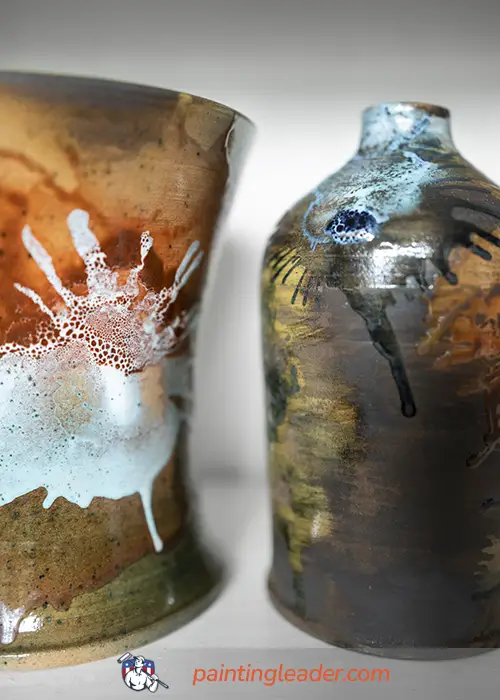

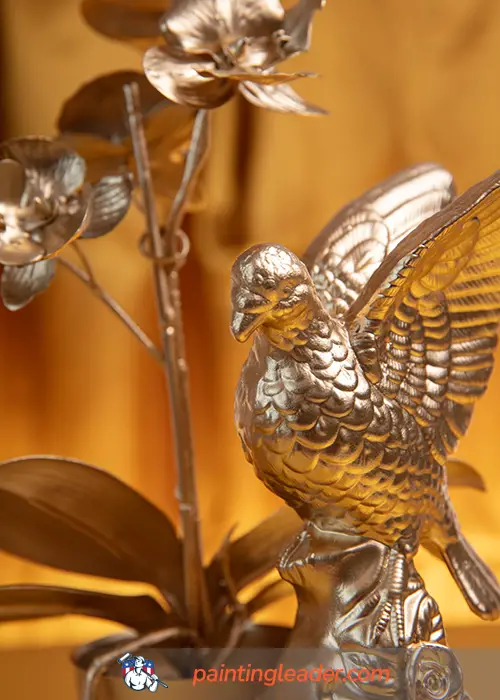
Sustainability and Acrylic Paints
Acrylic paints, while versatile, have environmental implications. The production process and disposal can impact ecosystems. However, artists can:
- Explore Eco-friendly Alternatives: Look for acrylic paints with reduced VOCs or those made from sustainable materials.
- Minimize Environmental Footprint: Opt for recyclable paint containers, use paint sparingly, and properly dispose of waste.
Did you know that Volatile Organic Compounds (VOCs) in paints can have implications for indoor air quality and overall environmental health? Understanding these compounds is crucial for artists who aim to create not just visually stunning but eco-conscious masterpieces. The Environmental Protection Agency (EPA) provides valuable insights into VOCs and their impact on indoor air quality, offering a guide that aligns with our commitment to sustainability. If you’re into keeping your art eco-friendly, give it a look right here.
Explore distinctions between powder coating and traditional painting methods for wheels: Powder Coat vs Paint Wheels
Troubleshooting Common Acrylic Paint Issues
Artists often grapple with acrylic paint challenges. Here’s how to navigate them:
- Cracking: Ensure the surface is clean and flexible. Apply paint in thinner layers to prevent future cracking.
- Color Shifting: Use high-quality paints and store artworks away from direct sunlight to maintain color integrity.
- Uneven Drying: Ensure consistent application thickness and consider using extenders to slow drying times.
Safety Measures When Using Acrylic Paint
Safety remains paramount:
- Ventilation: Work in well-ventilated spaces or use masks to avoid inhaling fumes.
- Handling & Disposal: Store paints away from children and pets. Dispose of waste responsibly, following local guidelines.
Enhancing Your Artwork: Finishing Touches
Once the paint has dried, consider adding finishing touches to elevate your artwork:
- Varnishing: Apply a clear varnish designed for acrylics to protect your artwork from dust, UV rays, and minor abrasions. This final layer enhances color vibrancy and adds a professional sheen.
- Embellishments: Incorporate embellishments like metallic leaf, sequins, or beads to add a touch of glamour and intrigue to your metal artwork.
- Frame Selection: Choose a frame that complements your artwork. A well-chosen frame can enhance the visual appeal and create a cohesive presentation.
Case Studies: Success Stories of Acrylic Paint on Metal
Case studies provide real-world examples that show how artists have successfully used acrylic paint on metal. These stories highlight the challenges they faced, their insights, and the amazing results they achieved. Let’s explore a few of these inspiring examples.
Maria Lopez: A Fusion of Traditional and Contemporary
Background:
Maria Lopez, a mixed-media artist, integrated acrylic painting with metalwork to create a series of sculptures.
Challenges:
- Integration of Materials: Ensuring a seamless integration of acrylic paint with metal components was a technical challenge.
- Structural Integrity: Maintaining the structural integrity of the sculptures while applying multiple layers of paint was crucial.
Insights:
Maria employed a collaborative approach, working closely with metal artisans to ensure the structural integrity of her sculptures. She used acrylic paints with a range of viscosities to achieve different textures and effects, complementing the metallic elements of her artworks.
Outcome:
The final sculptures were a harmonious blend of traditional metalwork and contemporary acrylic painting. Maria’s innovative approach garnered attention from both art enthusiasts and critics, highlighting the limitless possibilities of combining acrylic paint with metal.
By examining these case studies, it becomes evident that while painting with acrylics on metal presents its challenges, the results can be truly transformative. These artists’ experiences offer valuable insights and inspiration for anyone considering embarking on a similar artistic journey.
Sarah Thompson: From Rusty Metal to Artistic Masterpiece
Background:
Sarah Thompson, a renowned contemporary artist, took up the challenge of transforming old metal sheets into vibrant artworks using acrylic paint.
Challenges:
- Surface Preparation: The metal sheets were rusty and uneven, requiring extensive cleaning and sanding.
- Material Compatibility: Ensuring that the acrylic paint adhered well and did not flake off was a significant concern.
Insights:
Sarah emphasized the importance of thorough preparation. She used a combination of wire brushes and sandpaper to remove rust and create a textured surface for better paint adhesion. She also experimented with different primers before settling on one that provided optimal results.
Outcome:
The final artworks were a stunning blend of colors and textures, showcasing the versatility of acrylic paint on metal. Sarah’s project received critical acclaim and was showcased in several art galleries.
Explore distinctions between powder coating and traditional painting methods for wheels: Powder Coat vs. Paint Wheels
Rajan Patel: Exploring Cultural Themes on Metal Canvases
Background:
Rajan Patel, an emerging artist, chose metal as his canvas to explore themes related to cultural identity and heritage.
Challenges:
- Color Retention: Ensuring that the acrylic paints maintained their vibrancy on the metal surface was a challenge.
- Weather Resistance: Since the artworks were intended for outdoor display, weather resistance was a crucial factor.
Insights:
Rajan opted for high-quality acrylic paints known for their durability and color retention. He also applied multiple layers of varnish specifically designed for outdoor use to protect the artworks from UV rays and moisture.
Outcome:
The artworks successfully combined intricate designs with bold colors, reflecting Rajan’s unique artistic vision. Despite being displayed outdoors for several months, the colors remained vivid, demonstrating the longevity of acrylic paint on metal.
Showcasing Your Artwork: Display Options
Displaying your artwork effectively can amplify its impact:
- Indoor Display: If showcasing indoors, consider lighting options that highlight the texture and color contrasts of your metal artwork. Track lighting or accent lights can create a stunning visual display.
- Outdoor Display: For outdoor settings, ensure your artwork is protected from harsh weather conditions. Consider mounting it on a weather-resistant backing or using outdoor varnishes for added durability.
- Gallery Presentation: If aiming for a gallery presentation, adhere to standard framing and presentation guidelines. Professional presentation can significantly influence the perception and value of your artwork.
Engaging with the Community: Sharing Your Journey
Sharing your creative process and finished artwork can be rewarding:
- Social Media: Utilize platforms like Instagram, Pinterest, or art-specific forums to showcase your artwork. Engage with fellow artists and art enthusiasts to gather feedback and build connections.
- Art Exhibitions: Participate in local art exhibitions or community events to gain exposure and network with like-minded individuals.
- Workshops & Classes: Consider hosting workshops or classes to share your expertise and inspire budding artists. This not only fosters community engagement but also establishes you as a knowledgeable and influential figure in the art world.
Future Trends in Acrylic Painting
The acrylic painting realm is evolving:
- Emerging Trends: Digital integration, mixed media combinations, and sustainable practices.
- Innovations: Advanced color palettes, textured mediums, and eco-friendly formulations.
- Technologies: Augmented reality applications, innovative canvas materials, and digital-enhanced techniques.
FAQs
Will acrylic paint stay on metal?
Yes, when applied correctly with proper preparation, acrylic paint can adhere well to metal surfaces, offering long-lasting and vibrant results.
How do you get acrylic paint to stick to metal?
To ensure acrylic paint adheres well to metal, it’s essential to start with a clean and sanded surface. Using a fine-grit sandpaper helps create a textured surface that allows the paint to grip better. Additionally, applying an oil-based primer designed for metal before painting can further enhance the paint’s adhesion and longevity.
What kind of paint do you use on metal?
For painting on metal, it’s recommended to use acrylic paints formulated explicitly for metal surfaces. Brands like Golden Heavy Body Acrylics, Liquitex Basics Acrylic, and Winsor & Newton Galeria Acrylics are recognized for their compatibility with metal and offer properties such as exceptional adhesion, smooth flow, and lasting durability.
Conclusion: Can you use acrylic paint on metal?
Indeed! With preparation, the right tools, and a dash of creativity, acrylic paint can beautifully transform metal surfaces. By weaving sustainability, troubleshooting tips, safety measures, and future trends into our narrative, this guide serves as a holistic resource for artists, aligning with our commitment to comprehensive and insightful content.
While our focus today is on metal, understanding the nuances of painting on glass windows can offer valuable insights into surface preparation and paint selection across different materials. Check out our article: Transforming Your Space: A Guide to Painting Glass Windows.
For more than 15 years, I’ve been immersed in the world of painting, and I’ve created this website to share my passion and knowledge with fellow art enthusiasts. My artistic journey has led me through various mediums, techniques, and styles, always pushing the boundaries of expression. I invite you to explore the captivating realm of art with me – a journey of creativity, self-expression, and the endless possibilities that painting offers.
Feel free to reach out to me via email at leanna.ange@gmail.com. Whether you have questions, want to share your own artistic experiences, or simply connect, I’m here to engage in the wonderful dialogue that art inspires. Looking forward to hearing from you!




